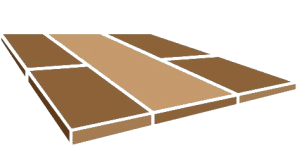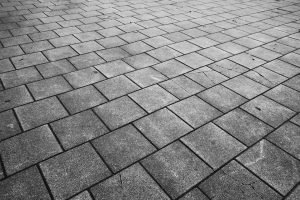Safety is paramount when it comes to outdoor surfaces. Whether it’s a walkway, patio, or pool deck, a slip-resistant surface is essential to prevent accidents and injuries. At Gilbert Paver Company, we understand the importance of paving for safety. In this article, we’ll explore how to create slip-resistant surfaces that provide peace of mind and protect your loved ones.
Safety should never be compromised in outdoor spaces. Gilbert Paver Company is dedicated to helping you create outdoor surfaces that prioritize the well-being of your family and guests.
Contents
The Significance of Slip-Resistant Surfaces
Slip-resistant surfaces provide traction, reducing the risk of slips and falls, especially in wet or icy conditions.
Materials for Slip-Resistant Paving
Textured Concrete
Textured concrete surfaces offer natural slip resistance due to their rough texture, making them suitable for various outdoor areas.
Natural Stone
Certain types of natural stone, like granite or slate, have inherent slip-resistant qualities and can be used for elegant and safe outdoor surfaces.
Rubber Pavers
Rubber pavers are designed with non-slip surfaces and are particularly suitable for pool decks and play areas.
Design and Layout for Safety
Surface Texture
Select materials with textures that provide grip underfoot, ensuring safe passage even in wet conditions.
Proper Sloping and Drainage
Ensure that outdoor surfaces are properly sloped to prevent water accumulation, which can create slippery conditions.
Effective Lighting
Well-placed outdoor lighting enhances visibility and safety during nighttime hours.
Professional Installation
Professional installation guarantees that slip-resistant surfaces are expertly crafted, meeting safety standards and providing durability.
Maintenance and Upkeep
Regular Cleaning
Routine cleaning removes debris and substances that can reduce slip resistance.
Resealing and Refinishing
Periodic resealing and refinishing help maintain the slip-resistant properties of the surface.
Repairing Damage
Promptly address any damage to the surface to prevent further deterioration of slip resistance.
FAQs – Your Top 5 Questions Answered
How do I know if my outdoor surface is slip-resistant?
You can perform a slip resistance test or consult with a professional to assess the surface’s slip resistance.
Can I make an existing surface slip-resistant?
Yes, you can enhance the slip resistance of existing surfaces through methods like textured coatings or sealers with additives.
Are slip-resistant surfaces suitable for all outdoor areas?
Slip-resistant surfaces are suitable for most outdoor areas, including walkways, patios, pool decks, and driveways.
What are the benefits of textured concrete?
Textured concrete offers both slip resistance and aesthetic versatility, making it a popular choice for outdoor surfaces.
How often should I reseal a slip-resistant surface?
Resealing frequency varies based on usage and weather conditions but typically ranges from every 1 to 3 years.
Prioritize safety in your outdoor spaces with slip-resistant surfaces from Gilbert Paver Company. Create outdoor areas that are beautiful, functional, and, above all, safe for you and your loved ones.



